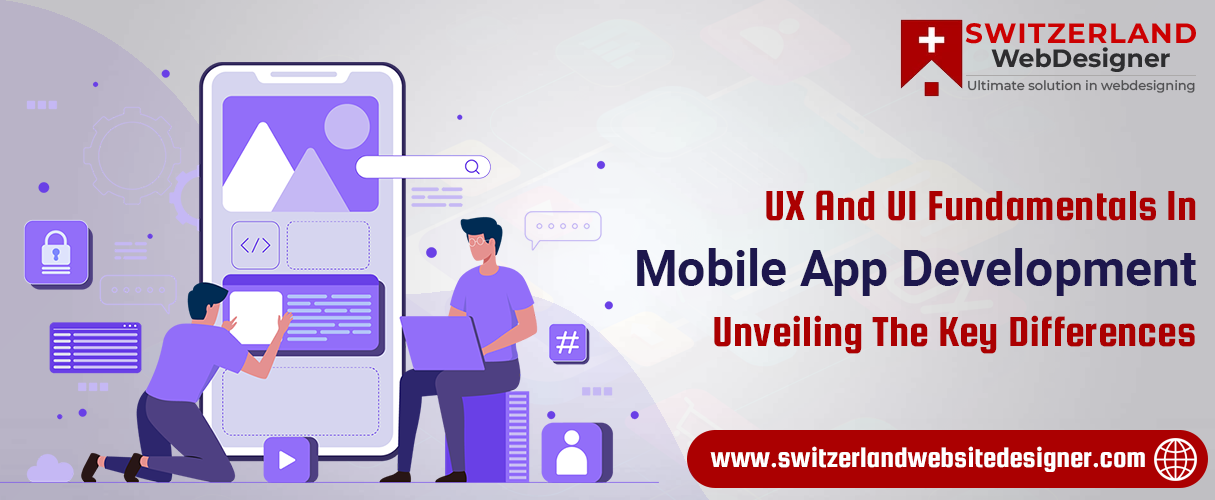
In the realm of mobile app development, two significant disciplines play a pivotal role in creating exceptional user experiences: User Experience (UX) design and User Interface (UI) design. While the terms UX and UI are commonly used interchangeably, they represent distinct aspects of the app development process. Understanding the fundamentals of UX and UI is important for crafting intuitive, visually appealing, and user-centric mobile applications.
In this blog post, we will explore the key differences between UX and UI, their fundamental principles, and their impact on mobile app development.
User Experience (UX) Fundamentals:
User Experience (UX) design focuses on enhancing user satisfaction by improving the usability, accessibility, and overall pleasure derived from interacting with a mobile application. It encompasses a broad range of disciplines, including user research, information architecture, interaction design, and usability testing. The primary goal of UX design is to create meaningful and engaging experiences that meet the needs and expectations of the target audience.
- User Research: UX designers conduct thorough research to understand the target users, their behaviors, goals, and pain points. This information helps in designing user-centric experiences tailored to their specific needs.
- Information Architecture: UX designers create a well-structured information architecture that organizes the app’s content, features, and functionalities in an intuitive manner. This ensures that users can easily navigate the app and find what they are looking for.
- Interaction Design: UX designers focus on designing intuitive and seamless interactions between users and the mobile app. This involves creating clear and concise user flows, wireframes, and prototypes to guide the development of the app’s interface.
- Usability Testing: UX designers conduct usability tests to gather feedback from users and identify areas for improvement. Through user testing, they can refine the app’s design and optimize its overall user experience.
User Interface (UI) Fundamentals:
User Interface (UI) design is concerned with the visual and interactive elements of a mobile app. It deals with creating visually appealing interfaces that users can interact with effectively and efficiently. UI design aims to create a visually cohesive and aesthetically pleasing experience for the users.
- Visual Design: UI designers focus on creating visually engaging interfaces by selecting appropriate color schemes, typography, and visual elements. They ensure consistency in the app’s visual style to establish a strong brand identity.
- Layout and Composition: UI designers arrange the app’s elements, such as buttons, icons, and text, in a visually balanced and aesthetically pleasing manner. They consider factors like hierarchy, spacing, and alignment to create a harmonious visual flow.
- Responsive Design: UI designers ensure that the app’s interface is responsive and adapts seamlessly to different screen sizes and orientations. This involves designing flexible layouts and using appropriate font sizes and touch targets to enhance usability across various devices.
- Interaction Design: UI designers create interactive elements, such as buttons, menus, and animations, that respond to user actions effectively. They focus on providing clear feedback to users, guiding them through the app’s functionalities, and creating delightful micro interactions.
The Difference between UX and UI:
While UX and UI represent different aspects of mobile app development, they are closely intertwined and rely on each other to create exceptional user experiences. UX research and design provide the foundation for understanding user needs and creating intuitive flows, while UI design brings those flows to life through visually appealing and interactive interfaces.
Collaboration between UX and UI designers is essential throughout the app development process. They should work hand in hand to ensure that the user’s journey is seamless, visually engaging, and aligned with the app’s purpose.
Conclusion:
In the world of mobile app development, UX and UI design are two fundamental disciplines that contribute to the success of an application. While UX focuses on enhancing user satisfaction by creating meaningful, intuitive experiences, UI design adds the visual and interactive elements that give life to those experiences.
By understanding the distinctions between UX and UI and appreciating their interdependency, mobile app developers can craft remarkable applications that captivate users and provide them with a seamless and delightful experience. The successful fusion of UX and UI design principles sets the stage for creating mobile apps that stand out in today’s saturated digital landscape.
Tags: Looking For UI Designer In India, Looking For UX Designer In India, Looking For AI Designer In India, Looking For Designing Team In India, UI UX AI Dev Team, Hire Web Designers In India, Looking For Web Development Company, Cross Platform Apps, Web Designing Company, Connect Infosoft Technologies, Looking for Mobile Application Development Service in India, looking for mobile app development company India, Best mobile app development services in India, Android Apps Development Services, iOS Apps Development Services, SaaS Application Development Services, Flutter Apps Development Services, React Native Apps Development Services
